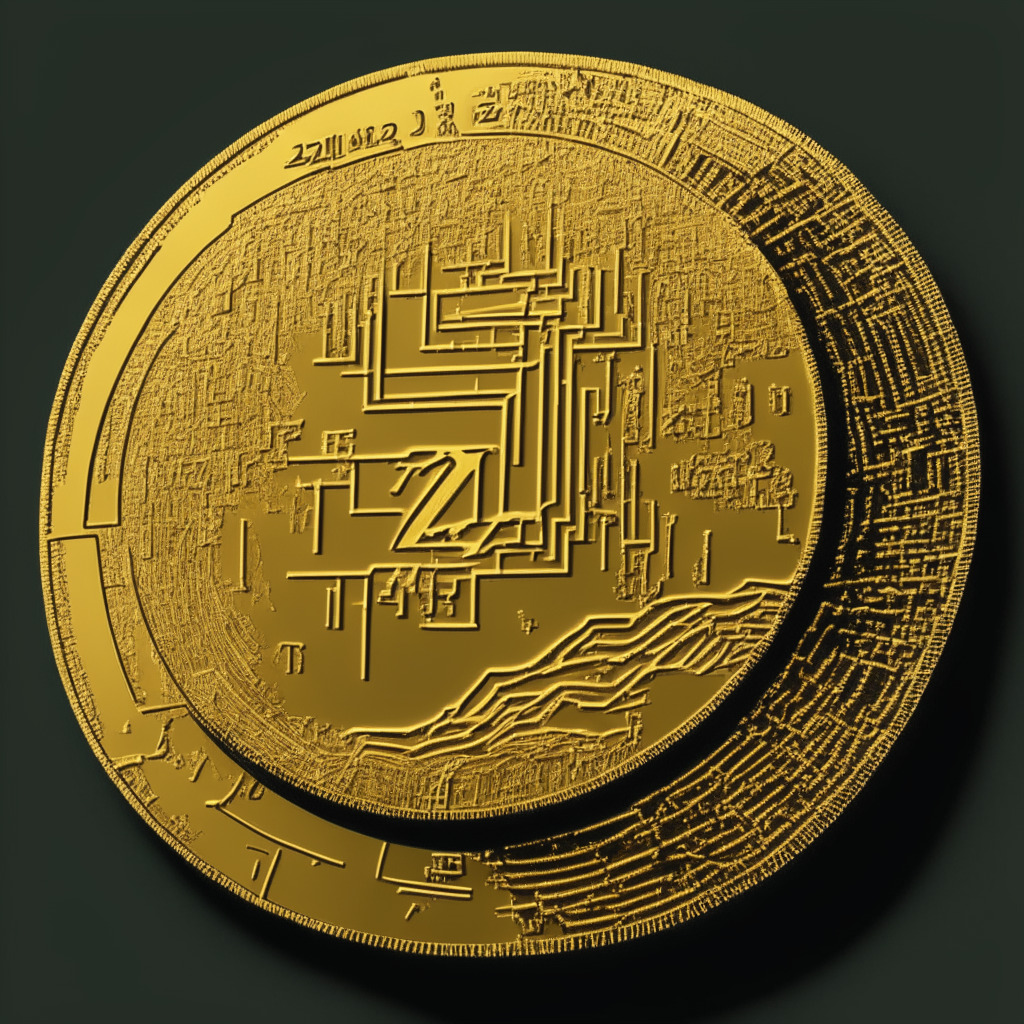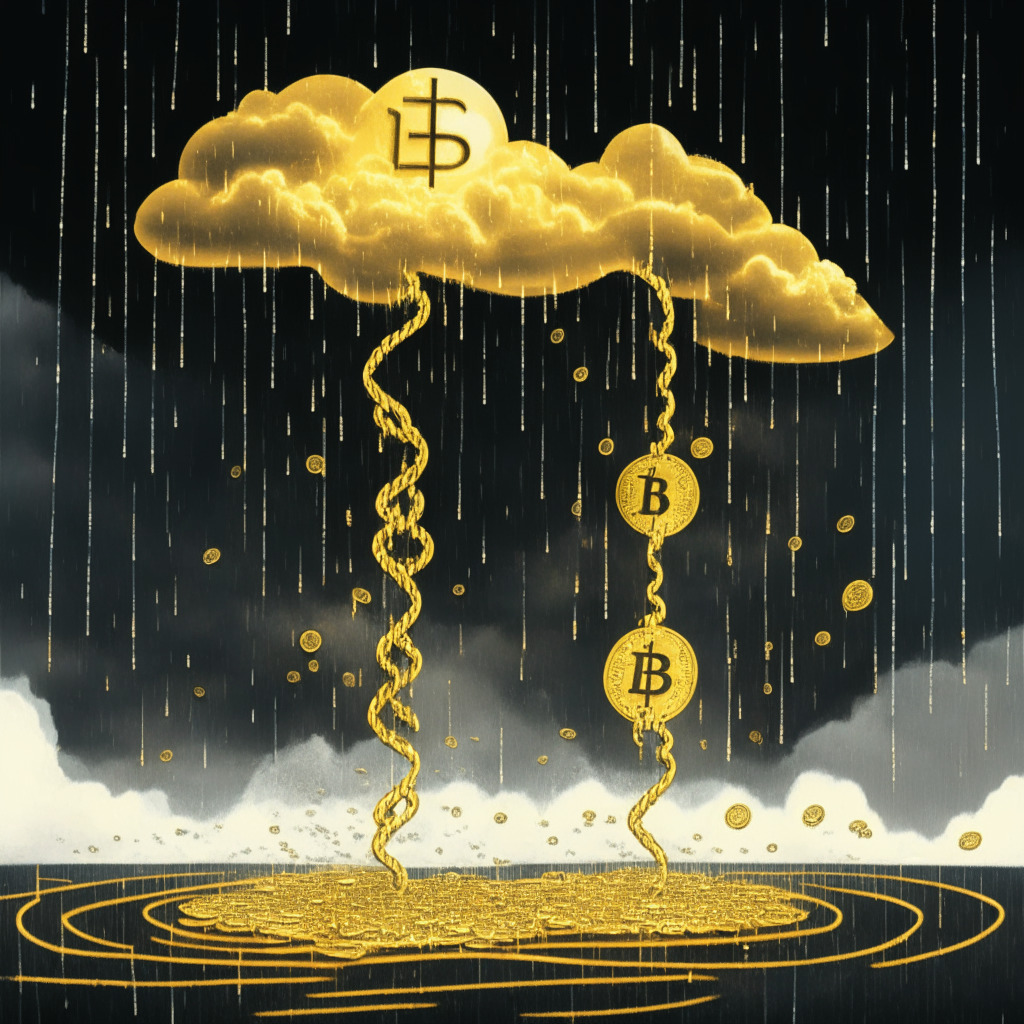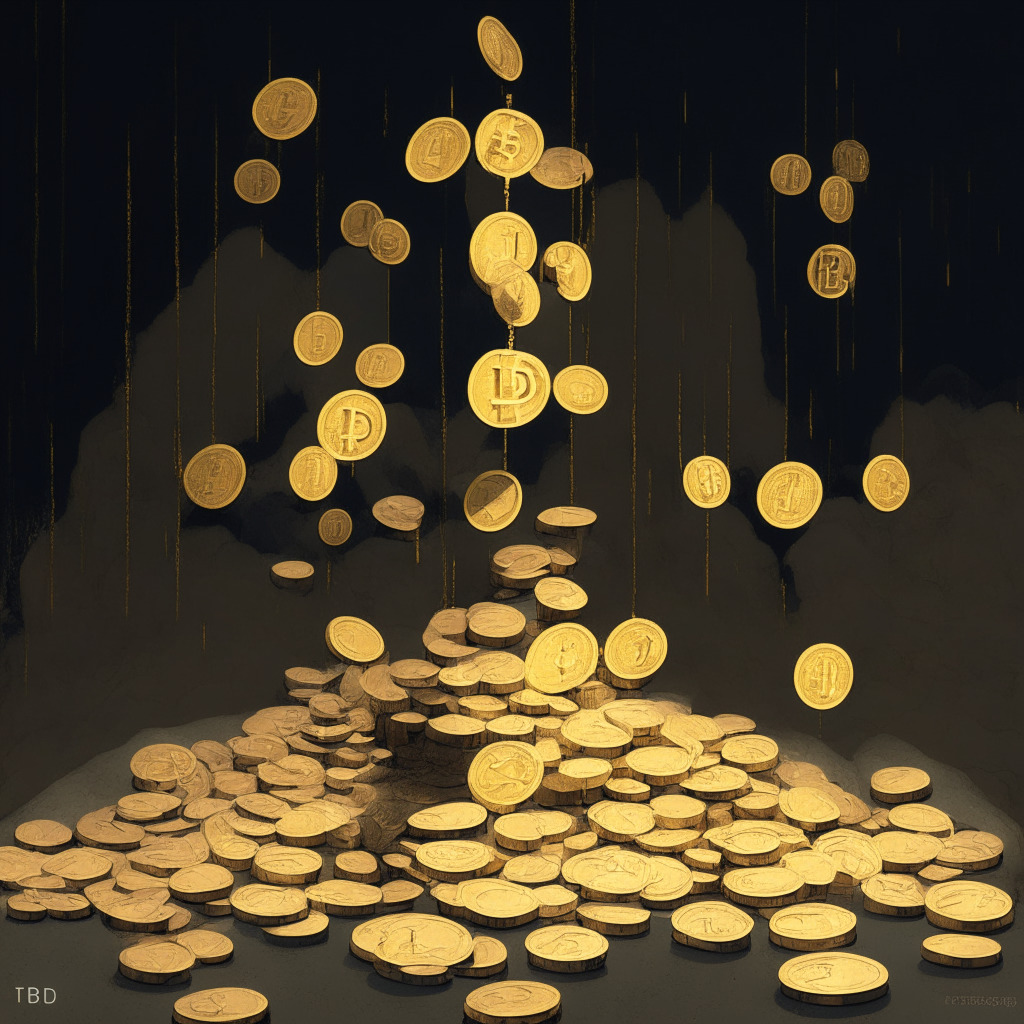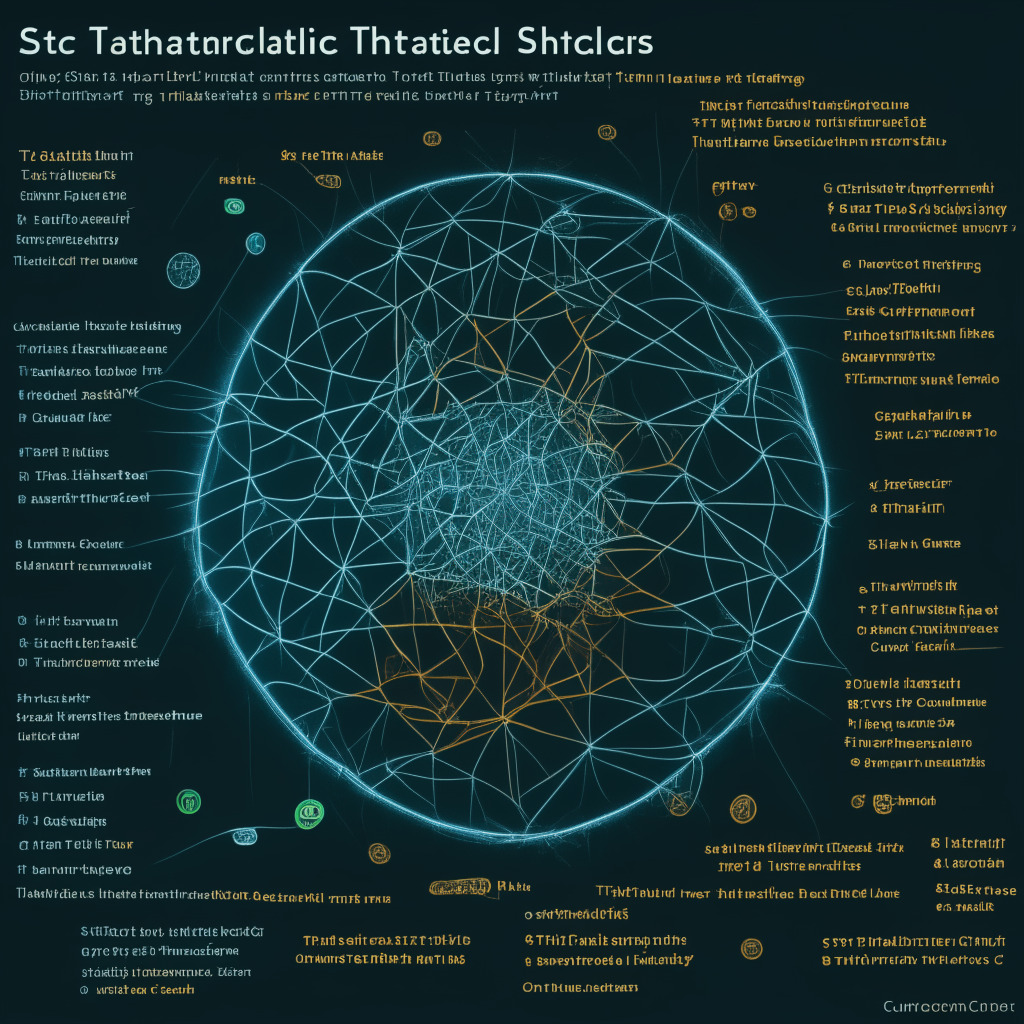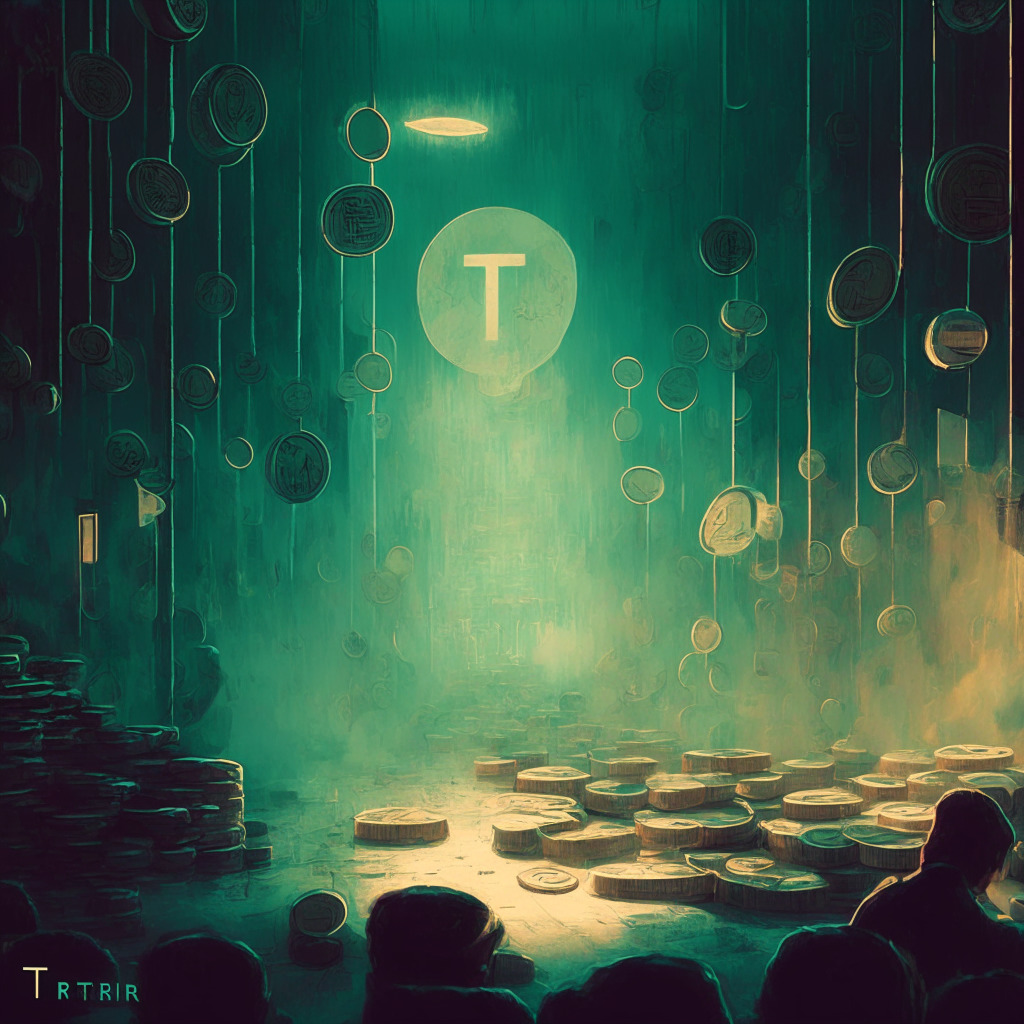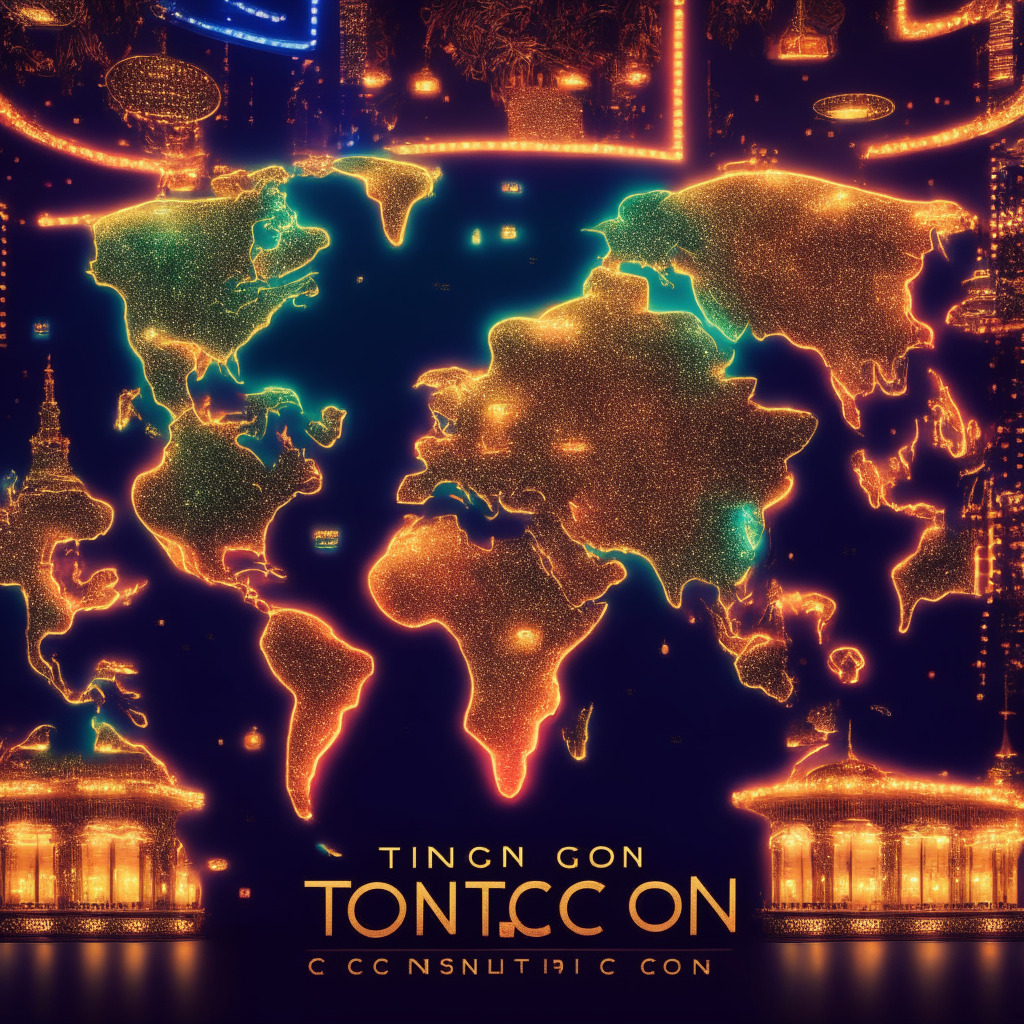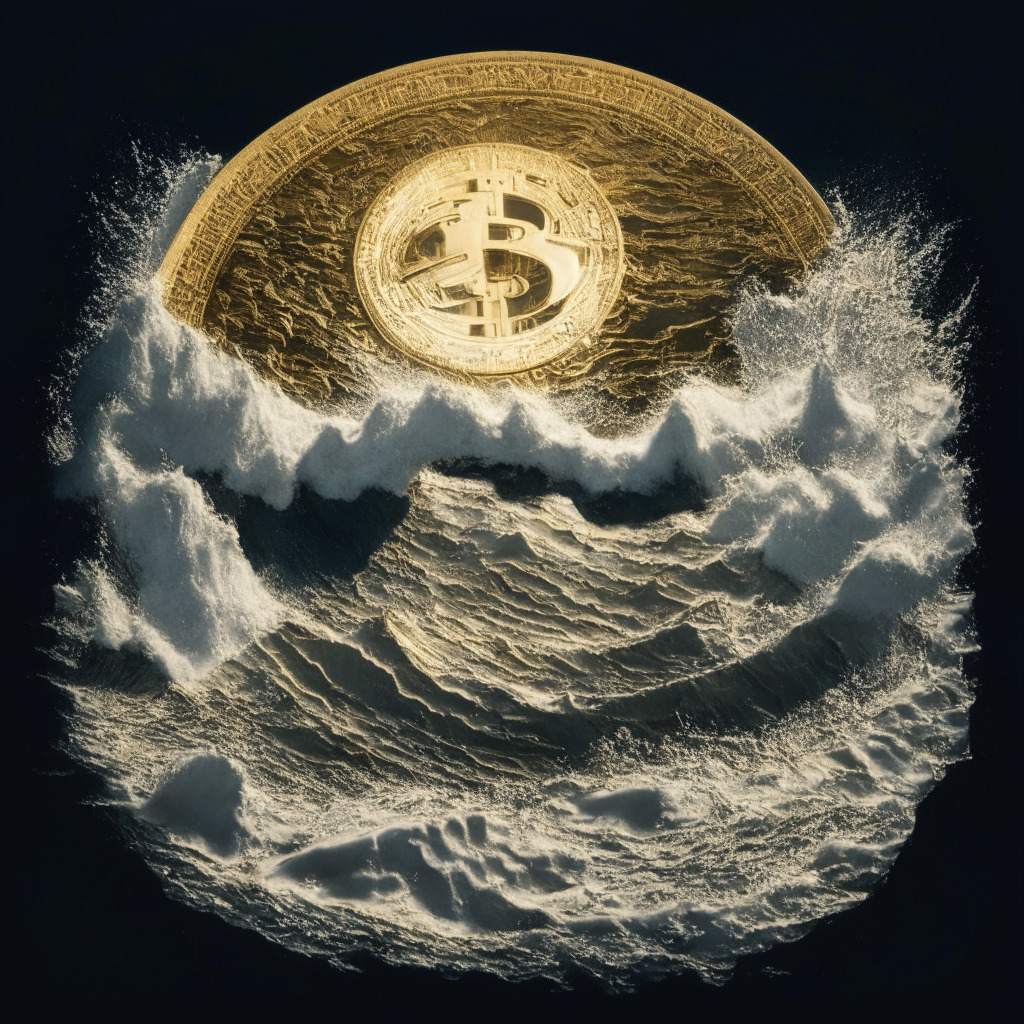“Alameda Research has minted over $38 billion in Tether (USDT) tokens in 2021, indicating that the total value of USDT creation surpasses Alameda’s total assets. The inner workings of this process involve benefiting from trade value discrepancies and ensuring USDT’s dollar peg stability. However, this raises ethical concerns for industry watchers.”
Search Results for: USDT
Stablecoin De-Pegging: A Deep-Dive into USDC and DAI Performance versus USDT and BUSD
“Analysts reveal ‘de-pegging’ is more common in stablecoins USDC and DAI compared to Tether and Binance USD. While stability ideally requires good governance, collateral and reserves, market confidence and adoption, USDT has shown steadiness despite mainstream scrutiny.”
Navigating Binance.US’s Bold Transition from USD to USDT Amidst Regulatory Challenges
“Binance.US, amid banking challenges, partnered with MoonPay, replacing USD with USDT, turning the exchange into a cryptocurrency-based platform. While facing regulatory scrutiny, it suspended fiat withdrawals and transactions, indicating a retreat from traditional financial systems. The switch raises questions about future banking.”
Blockchain Paradox: The Potential and Pitfalls of BTC, ETH, BNB, XRP, ADA and USDT
“The world of cryptocurrency, including BTC, ETH, BNB, XRP, ADA, and USDT, hold opportunities and threats. Volatile prices hold promise for vast returns but can present disastrous losses. While cryptocurrencies offer solutions, their susceptibility to hacking raises security concerns.”
Unpacking the Unusual Dynamics: USDT’s Massive Sell-Off Raises Questions and Uncertainties
“USDT, a widely used stablecoin, saw a significant discharge from crypto traders’ wallets, especially on Curve Finance and UniSwap exchanges. This event caused USDT’s price to drop below its usual $1 peg. This indicates that under certain circumstances, investors may prefer holding DAI or USDC rather than USDT.”
USDT Stablecoin: Uncovering Chinese Backing and the Quest for Transparency in Crypto
Documents from the New York Attorney General’s Office reveal Tether’s USDT stablecoin was backed by Chinese securities, contradicting previous denials. Tether held foreign securities, including Deutsche Bank and Barclays Bank, to support reserves. The findings prompt questions about USDT’s safety and legitimacy, and emphasize the importance of transparency in the crypto industry.
Tether’s USDT Losing Dollar Peg: Impact on Stablecoin Pools and Crypto Landscape
Tether’s USDT stablecoin lost its dollar peg, leading to an imbalance in stablecoin trading pools as traders exchanged USDT for USDC and DAI. This resulted in USDT balances on Curve’s 3pool rising to over 70%, straying from the intended equal distribution among the three stablecoins.
Crypto Whales Offloading USDT: A Sign of Instability or Market FUD?
Whales offloading substantial amounts of Tether (USDT) have caused a surge in its dominance within the Curve 3pool liquidity pool, raising concerns about the stablecoin’s stability and potential USDT depegging. This recent sell-off significantly impacts the pool’s composition and sparks apprehension regarding Tether’s long-term trustworthiness.
USDT Sell-off Raises Concerns: Exploring Alternatives and Tether’s Unwavering Commitment
Millions worth of USDT stablecoins sold off on Uniswap and Curve pools, raising concerns among traders and suggesting a preference for DAI and USDC over Tether. This could indicate a diverse and competitive stablecoin market, benefiting users while reflecting potential regulatory concerns.
Is Tether’s USDT Stablecoin Under Pressure? Examining Unusual Selling Activity
Speculation mounts that Tether’s USDT stablecoin may be under pressure, with liquidity pools on Uniswap and Curve protocols flooded with USDT sellers. A potential USDT depeg could be catastrophic for the crypto economy, raising concerns over its liquidity and stability amidst growing market share.
Tether’s $1B Minting Spree: USDT Dominance Grows Amidst Competitor Challenges
Tether has minted another $1 billion worth of USDT on the Ethereum blockchain, totaling over $16 billion in 2023. The latest mint will replenish inventory and facilitate issuance requests and chain swaps, maintaining Tether’s stablecoin market dominance amidst challenges faced by other issuers like Circle.
SEC Actions Impacting Hong Kong Crypto Landscape: Binance and USDT Face Off
Hong Kong licensed lawyer Gilbert NG discusses the potential impact of the US SEC’s actions on Hong Kong’s regulatory landscape for cryptocurrency platforms like Binance. The contrasting treatment of Binance and USDT by the SEC, differing definitions of securities, and established regulatory frameworks in Hong Kong offer distinct approaches to digital asset transactions.
Tether’s USDT Reclaims All-Time High Market Cap Amid Stablecoin Controversy and Competition
Tether’s stablecoin USDT has regained its all-time high market cap of $83.2 billion, despite challenges in the stablecoin market and criticism over its reserve transparency. USDT’s perceived safety from U.S. regulators and its growing use for global payments contribute to this resurgence, highlighting peg stability as a priority for users.
TRC-20 USDT Surpasses Ethereum: Tron’s Success Amid Regulatory Challenges
TRC-20 USDT circulation reached a record high of $46 billion, surpassing Ethereum’s $36.8 billion and accounting for over 60% of USDT’s circulating supply. Tron’s ambitious goals for a $100 billion on-chain stablecoin market cap and preference among stablecoin users show promise, but potential regulatory challenges and legal risks must be considered.
Stablecoin Market Shifts: USDT Reigns Supreme as USDC Fumbles with Regulation
The market dominance of stablecoins has shifted, with Tether’s USDT hitting an all-time high and Circle’s USDC experiencing a downturn. Increased transparency is emphasized for stablecoin reserves, while Tether and Circle reduce banking exposure amid economic uncertainty and increase US Treasury holdings.
Tether’s USDT: Surging Market Cap and Falling Trading Volume – What’s the Catch?
Despite Tether’s USDT stablecoin market cap surging to $83.4 billion, its trading volume has experienced a sharp decline, falling below $10 billion for the first time since March 2019. This trend raises questions about the stablecoin’s actual usage and brings concerns about USDT’s value and lack of audits back to the surface.
Soaring Profits for Tether: Stablecoin Industry Boom and USDT Token Holder Concerns
Tether reported a record profit of $1.48 billion in Q1 2021, attributed to rising interest rates and diversifying its reserves with physical gold and Bitcoin. The stablecoin issuer sees a 20% increase in token circulation, reflecting growing customer trust. However, concerns arise as USDT token holders receive no interest, and companies need to balance profits and customer interests for sustainable growth.
Ethereum Trading Contest at ProBit Global: Win Big in the 5,000 USDT Prize Pool
ProBit Global adds Ethereum to its trading competition series, coinciding with the successful completion of the Shapella upgrade. Users can win rewards based on trading volume, with a total prize pool of 5,000 USDT available. This competition aims to boost interest in Ethereum as the network evolves.
Unveiling Binance’s $1B Recovery Fund: Generous Aid or Strategic Maneuver?
“Binance’s $1B cryptocurrency recovery fund, the Industry Recovery Initiative (IRI), has reportedly invested only an estimated $30M since its inception, despite large capital commitment. With growing regulatory concerns, unused funds were moved to Binance’s corporate treasury, raising questions about the effectiveness of such recovery initiatives in the evolving blockchain industry.”
Cryptocurrencies in Conflict Resolve: Israeli Cyberspace Crackdown vs. Crypto Aid Israel
The Israeli police cyber unit and Binance tackled Hamas’ attempts to raise funds via cryptocurrency while Crypto Aid Israel, supported by Fireblocks, was established to receive cryptocurrency donations for displaced citizens securely. The growing cooperation could potentially link cryptocurrency assets and traditional banking, crystalizing a hybrid financial future vision.
Hong Kong’s Regulatory Dilemma: The Price of Protecting Crypto Investors
“Hong Kong is taking steps towards limiting retail stablecoin trading among individual investors due to increasing crypto adoption. Stablecoins’ value is pegged to fiat currencies, providing some stability against crypto turbulence. However, the recent TerraUSD stablecoin collapse underscores the need for stringent regulation to ensure investor protection and maintain price stability.”
Exploring the Growth Surge of Toncoin and the Entry of TG.Casino in GambleFi Market
“There has been increased interest in the Open Network’s Toncoin with a 5% rise after a minor retracement from an uptrend resistance. Despite recent downturns, Toncoin maintained its high trading within its channel, demonstrating robust consolidation strategies. Meanwhile, TG.Casino, utilizing blockchain technology, sets a new benchmark for GambleFi, ensuring secure and convenient gaming experiences.”
Balancing Act: Supervising AI Vs. Regulating Cryptocurrencies – Who Gets the Upper Hand?
This article discusses a project launched by UNESCO and the Dutch government to study AI supervision across Europe, aiming to develop guidelines from best practices. It also highlights the contrast of some nations focusing heavily on AI regulations, while cryptocurrency protocols, such as for stablecoin transactions, are being neglected. The importance is stressed of striking a balance between embracing technological advances and ensuring proper regulation for consumer protection.
PayPal’s PYUSD Stablecoin: Welcomed Asset or Threat to Tether’s Predominance?
Tether co-founder, William Quigley, in a recent interview expressed skepticism towards the acceptance of PayPal’s impending stablecoin. Highlighting that cryptocurrencies earn credibility over time, he outlined that new entrant, PayPal, would face challenges in gaining trust and performance reputation among crypto users. He flagged significant regulatory challenges and the high cost of compliance as potential hurdles for PayPal’s stablecoin.
Unmasking Shadows: Blockchain’s Flashy Evolution Amidst Ethical Challenges and Regulatory Needs
This article discusses the complex landscape of blockchain technology. It highlights misuse of power in crypto markets, efforts to foster secure trading conditions, potential tokenization of debt securities, the implication of decentralized prediction markets, and calls for comprehensive regulation and ethical self-governance in the crypto field.
The JPEX Saga: An Unsettling Dive into DAOs, Dividends, and User Authorisation Debacle
Cryptocurrency exchange JPEX’s controversial transition into a decentralized autonomous organization (DAO) and its DAO Shareholder Dividend Scheme have led to allegations of unauthorized operations and duping, prompting regulatory scrutiny. This situation underscores cryptocurrency’s dynamic opportunities and potential risks, highlighting the need for education, vigilance, and prudent regulation in this evolving digital landscape.
Telegram’s Blockchain-based Super-App: An Encroaching Security or Blessing in Disguise?
“Telegram’s Open Network (TON) has received major investment from MEXC exchange, aiming to enhance TON’s role in shaping Telegram’s journey towards becoming a Web3 super-app. However, concerns over security measures are being raised given the potential risks posed by blockchain platforms and crypto transactions.”
Sanctions on Crypto Wallets Reveal Unwavering Regulatory Power and Challenge Decentralization Ethos
“The US Department of Treasury imposed sanctions on digital wallets tied to illicit activities by Chinese firms, revealing the reach of regulatory bodies in tracking crypto transactions on BTC, ETH, USDT, and TRX blockchains. This emphasizes the growing interlink between blockchain and regulation, pointing towards an era of advanced blockchain forensics.”
Rollbit Coin Rockets Amid Market Surge: A Buying Opportunity or Risky Bet?
“A 24% surge has shaken the crypto market thanks to a refreshing wave of network growth and rising GambleFi revenue, with Rollbit (RLB) at the epicenter. However, a rapidly intensifying Relative Strength Index could necessitate further consolidation. Meanwhile, TG.Casino ($TGC) is causing ripples in the gambling industry, integrating casino games with blockchain decentralization.”
Riding the Bitcoin Bull: Opportunities in October and the Bitcoin Minetrix Token
“According to crypto specialist, @bitbitcrypto, Bitcoin’s price usually surges in October, making it a great investment opportunity. Key developments, like interest rate cuts, Bitcoin ETF applications, and the upcoming Bitcoin halving are expected to favor Bitcoin’s growth. The Bitcoin Minetrix ($BTCMTX), a new Bitcoin mining derivative token, also shows promise with an initial financial swell worth $350k.”
Rising Star: Wall Street Memes Coin’s Astonishing Journey from Debut to 4th Most-Traded Meme Coin
Wall Street Memes ($WSM) has become the fourth most traded meme coin globally within a week of its listing on OKX, with nearly $60 million worth of $WSM traded. This new player in the meme coin market has gained popularity due to its connection with Elon Musk and its distinct feature – a staking system for users. While $WSM’s future seems promising, potential risks and challenges specific to meme coins should be considered carefully.
Bankruptcy of Haru Invest: Impacts on Crypto Lending and The Future of Stablecoins
South Korean CeFi firm Haru Invest, recently filed for bankruptcy following fraud allegations. This incident affected fellow crypto lender, Delio, leading to a suspension of deposits and withdrawals in June. Despite bankruptcy, Haru set a phased asset recovery plan aiming to return investments equally to its users.
